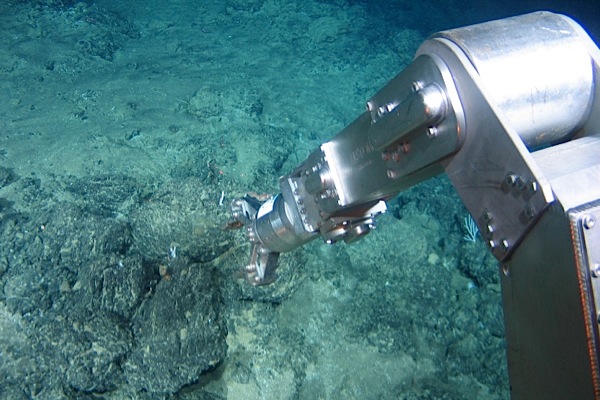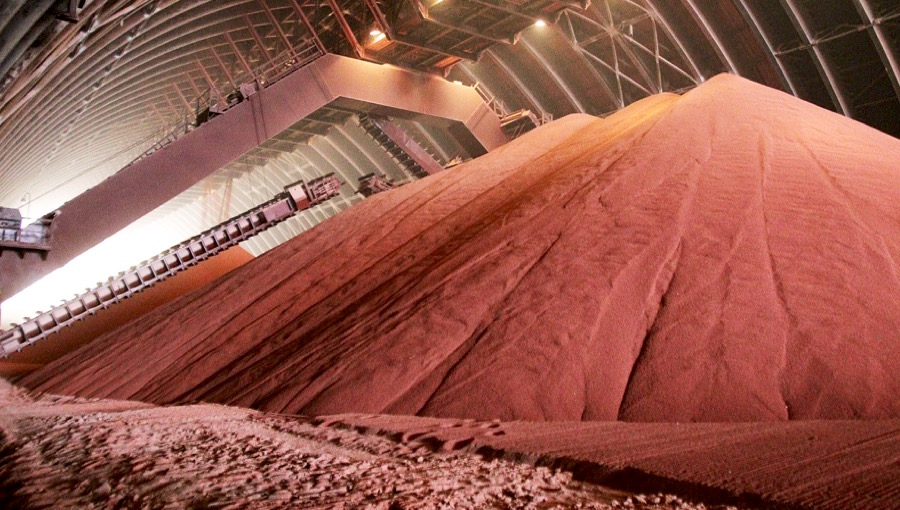Seafloor copper extraction better than traditional mining — report

Extracting copper from the seabed may cause less disruptions to the environment and local communities than traditional mining. (Image courtesy of Nautilus Minerals)
A fresh study commissioned by Canadian seafloor miner Nautilus Minerals (TSX:NUS) shows than extracting copper from the seabed causes less disruptions to the environment and local communities than traditional mining, the company said.
The report, released by Earth Economics, compared Nautilus’ copper, gold Solwara 1 project — located in the Bismark Sea, north of Papua New Guinea — to three traditional copper mines: Bingham Canyon (Utah, U.S.), Prominent Hill (South Australia, Australia) and Intag (a proposed project in Ecuador).
Based on the analysis of each mine’s social and environmental impacts, the research concluded that seafloor mining has the potential to not only provide economic benefits within the communities nearest to the operations, but also to minimize the impact of copper mining.
According to Nautilus Minerals, the study proves that the proposed Solwara 1 project would be “far superior” than existing and proposed terrestrial copper mines. “[Seabead mining] has also the potential to change the physical nature of the mining industry for the better,” Nautilus’ chief executive officer said in a statement.
The Toronto-based company, the first yet not the only one with projects to mine the ocean floor, summarized the key finding of the reports as follows:
1. World demand for copper continues to rise, with increasing global economic development, expanding renewable energy supplies (wind, hydro, wave geothermal, tidal power) and growing copper plumbing, electronics and communications sectors.
2. Recycling is likely limited to around 35% of the supply of copper. Copper ore concentrations are declining. Environmental and social impacts of copper mining are rising.
3. There is an urgent need to meet world copper demand while reducing fresh water use and contamination, damaging impacts to communities, mine footprints and CO2 emissions from copper mining.
4. Seafloor mining has the potential to minimize the impact of copper mining by producing more copper with fewer natural capital inputs, fewer damaging outputs and a smaller area of impact.
5. The proposed Solwara 1 project when compared to the terrestrial mines, entails far less environmental and social impact and less short and long-term risks.
6. Terrestrial mines have significant impacts. Measured on the basis of impacts per ton of copper, the Solwara 1 project would outperform terrestrial mines:
– People will not be displaced by the proposed Solwara 1 project.
– There will be no impact to food production.
– There will be no impact to surface or groundwater fresh water supplies.
– There will be no significant risk of disaster (e.g. mine tailing slide into communities).
– There will be no impact to pollination, soil formation, erosion, historic and cultural values.
– The monetary damages (measured in terms of USD/year) resulting from terrestrial mines is estimated to be significantly more than that of the proposed Solwara 1 project (4 to 13 times per ton of copper produced for the three mines used in the comparison).
– The long-term mining liabilities for freshwater contamination, tailings and overburden failures that threaten downstream communities do not exist in Solwara 1.
Nautilus settled a key dispute with the PNG’s government last year, and since then, progress has moved quickly on the Solwara 1 project. The company expects to have all its undersea mining tools ready to go by mid-2016.
It has also entered a charter agreement for a massive mining vessel, which it expects to receive in late 2017. After that, Nautilus expects to start digging up copper and precious metals almost right away.
The project, located in the minerals-rich Manus basin, is expected to become the world’s first commercial high-grade deep-sea copper and gold mine.
More News
{{ commodity.name }}
{{ post.title }}
{{ post.date }}




8 Comments
Rayna Hay
The thing is who will see and know of any problems that arise when its such a extremely remote and specialist mine? The negative impacts of traditional mines are only costly as they have become known to the general public and then protested by them and government involvements is mostly only due to fear for loss of votes! While I agree mining is a necessity, the history of miners doing the right thing for the sake of the right thing is rare! I imagine the fisheries departments in this area will react if problems are noticed, but who else will be watching?
Gary
Good news is they won’t have any dust suppression issues
TheComplete ReCycle
What about the tailings, if tailings did not contain acid and arsenic I am sure it could be dumped without slime dams, they will poison the sea.
Vic Alberts
I have to agree with Rayna . HOW would you know if you hit a sulphur pod or an arsenic area under the water
Kenneth Viney
The hydraulic seal failures will be an issue. Just finding hydraulic hose, pipe and fittings that can take those pressures is a challenge, as will the ability to move large areas of overburden without processing the materials or if they are processed the tailing requirements will be much larger and more costly than projected. And yes the tailing ponds will contain nasty arsenic, sulfur dioxide and other crap. Until someone pays us to do a preliminary study of the mining equipment and their production rates we will short the stock. Pie in the SKY project. Another Baja Mining project???
Zulugroove
It all sounds so Star Wars …I can’t wrap my head around an open pit mine,and the vastness of it, with all the problems, blasting clearing, collecting, then…..put it under water??? Not until the price per pound is comparable to gold!
LAMB
One big drawback that is not addressed in this article is the disruption to the Ocean/Sea life living in the area being mined. Will it disrupt the mating of those denizens of the deep , rendering their species ‘extinct’ ? And will it disrupt the food source to humans that get their sustenance from the Oceans/Seas?
It appears that “out-of-sight/out-of-mind” philosophy is at play here by those protagonists of Sea Floor Mining.
Anders14
Are they seriously claiming that there will be no impact on food production or sig risk of disaster? I’d love to see the independent scientific research to back those claims. Oh that’s right, there isn’t any…..
And FWIW that picture is so misleading regarding the actual planned extraction process. It certainly wont involve a robotic arm daintily picking up copper nodules here and there….